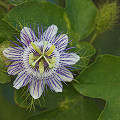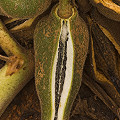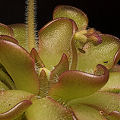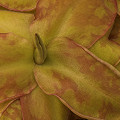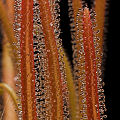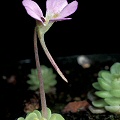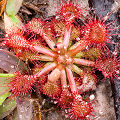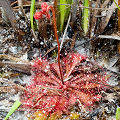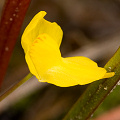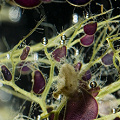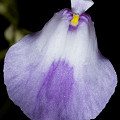Q: Carnivorous plants of México--a Pinguicula stronghold!
A: With a diversity of habitats, México contributes well to our global carnivorous
plant biodiversity. It is home to species of
Drosera, Genlisea, Utricularia,
Pinguicula, and Catopsis. México is also home to
Passiflora foetida and Capsella bursa-pastoris, two plants that may or
may not be carnivorous. Furthermore, while I have not yet found citable references to support me, I suspect
that the non-native Ibicella lutea also occurs in México.
Remember that I warned you that the compendia of species lists on this page date to maybe around 2007. For more updated information, you will have to do more
digging!
Pinguicula
The strength of México's carnivorous plant biodiversity is surely in the genus
Pinguicula. The list of Mexican species includes many species, nearly all of which are endemic--many carnivorous plant aficionados visit the
country just to see plants in this
genus! The states of Oaxaca, Tamaulipas, San Luis Potosí, Hidalgo, and
Nuevo León have at least five species each. Oaxaca is the clear winner, with at least fourteen species, i.e., nearly
twice as many species as the other most species-rich states.
Drosera
México is surprisingly weak on representation in this genus. It is possible that more species will be detected in
the country in the future. For example, I would not be surprised if Drosera intermedia occurs
in México, as its range includes the USA and Cuba. The Drosera are known to occur in
México include Drosera brevifolia and Drosera capillaris. No doubt more will be found.
Genlisea
G. filiformis has been collected from Chiapas; possibly more occur there.
Utricularia
Utricularia has many species in the country, and more are sure to be documented in the future.
The species U. resupinata and U. olivacea occur in countries
adjacent to México, and are candidates for being detected there in the future. Currently
we know of the following species, and probably more are to be found or described:
U. amethystina, U. foliosa, U. gibba, U. hintonii, U. hispida, U. hydrocarpa, U. juncea, U. livida, U. macrorhiza,
U. petersoniae, U. perversa, U. purpurea, U. pusilla, U. regia, and U. subulata.
Are there yet other species that have not been discovered, or is our knowledge of the ranges of the species above incomplete? Claro que sí!
Page citations: García, M.O. & Martínez S.E. 2002; Rice, B.A. 2006a; Rivadavia, F. 2008 (pers. comm.); Robinson, A., et al. 2017; Taylor, P. 1989; USDA, GRIN, accessed 8/2008; personal observation.
